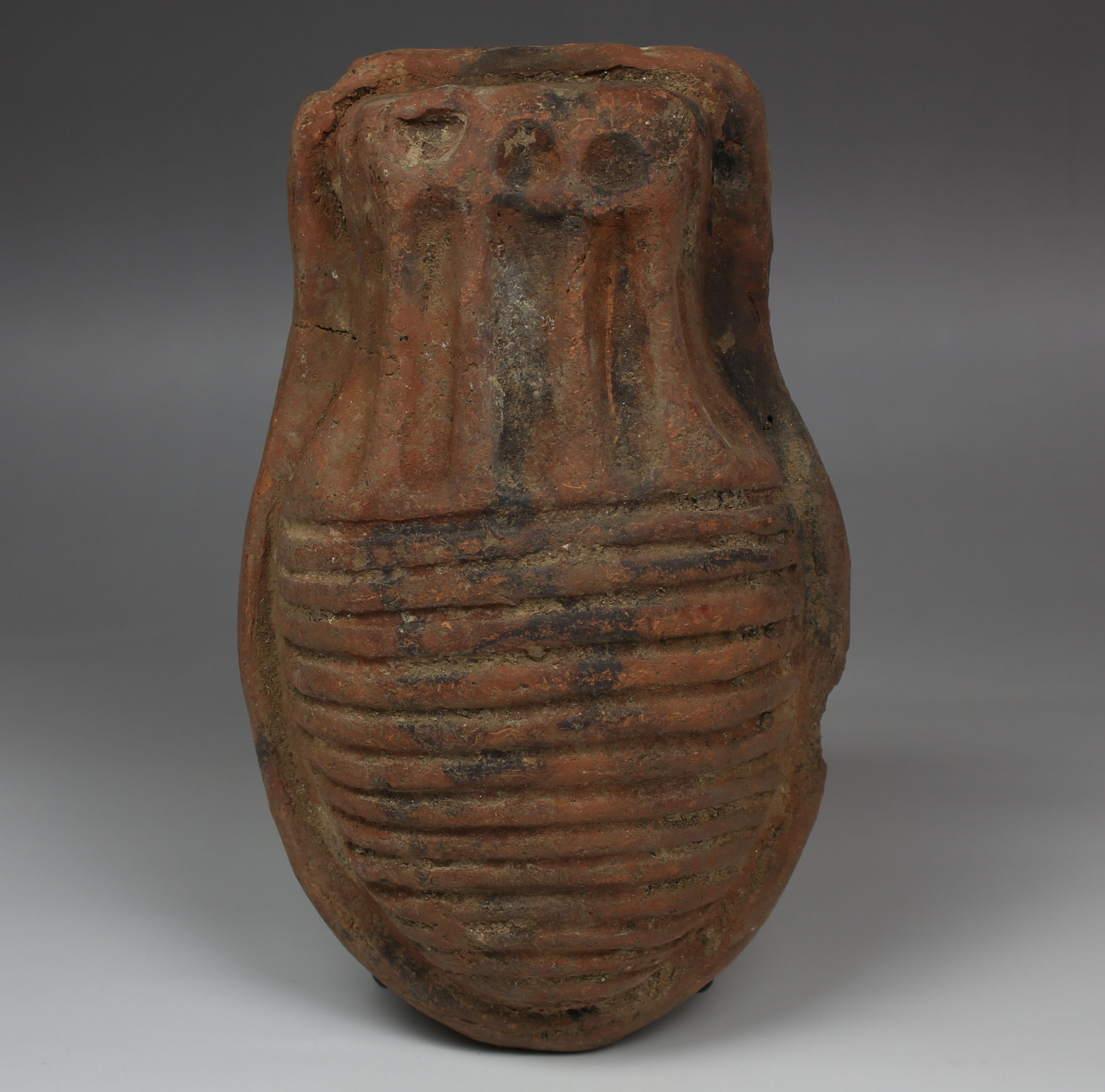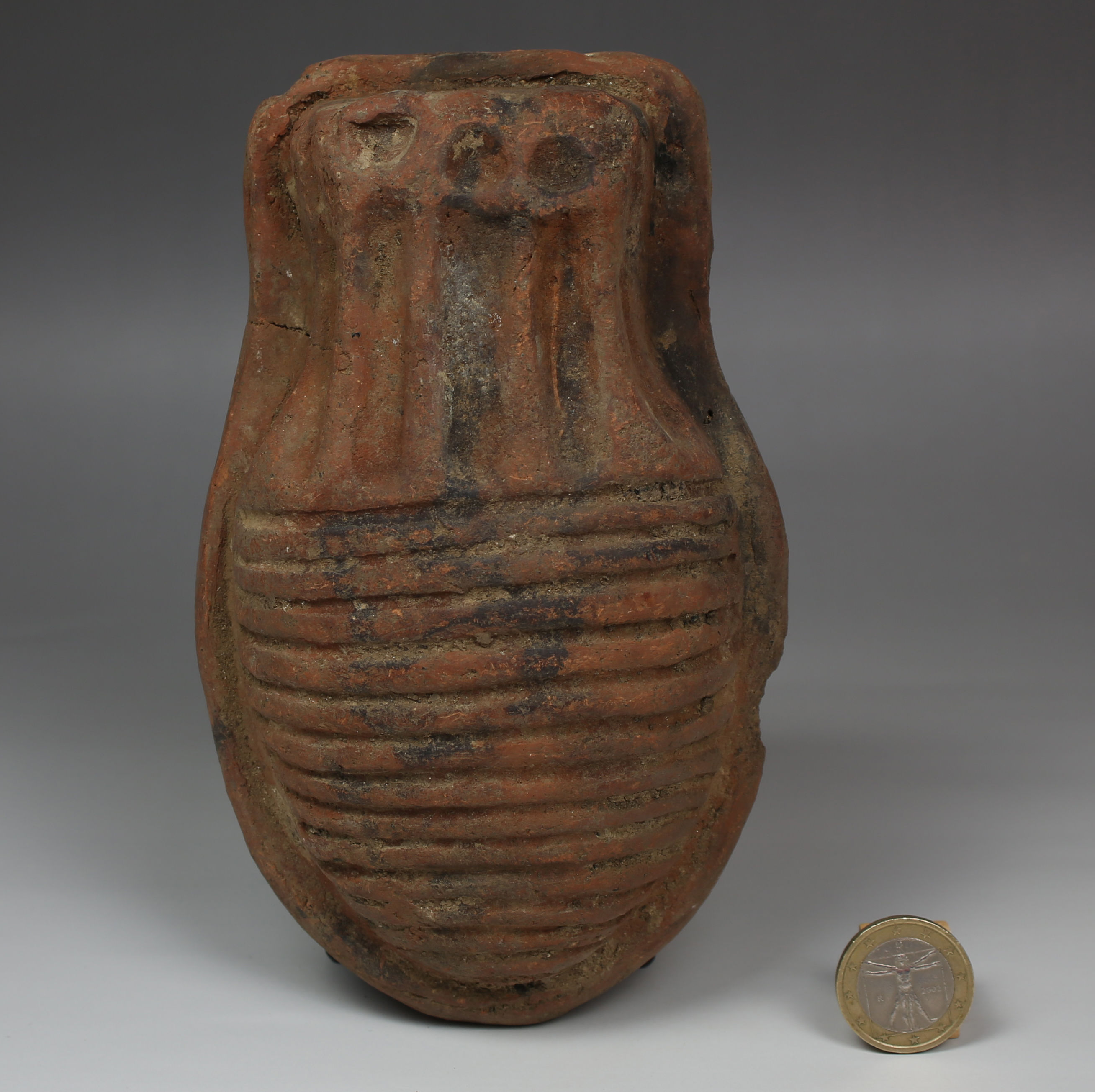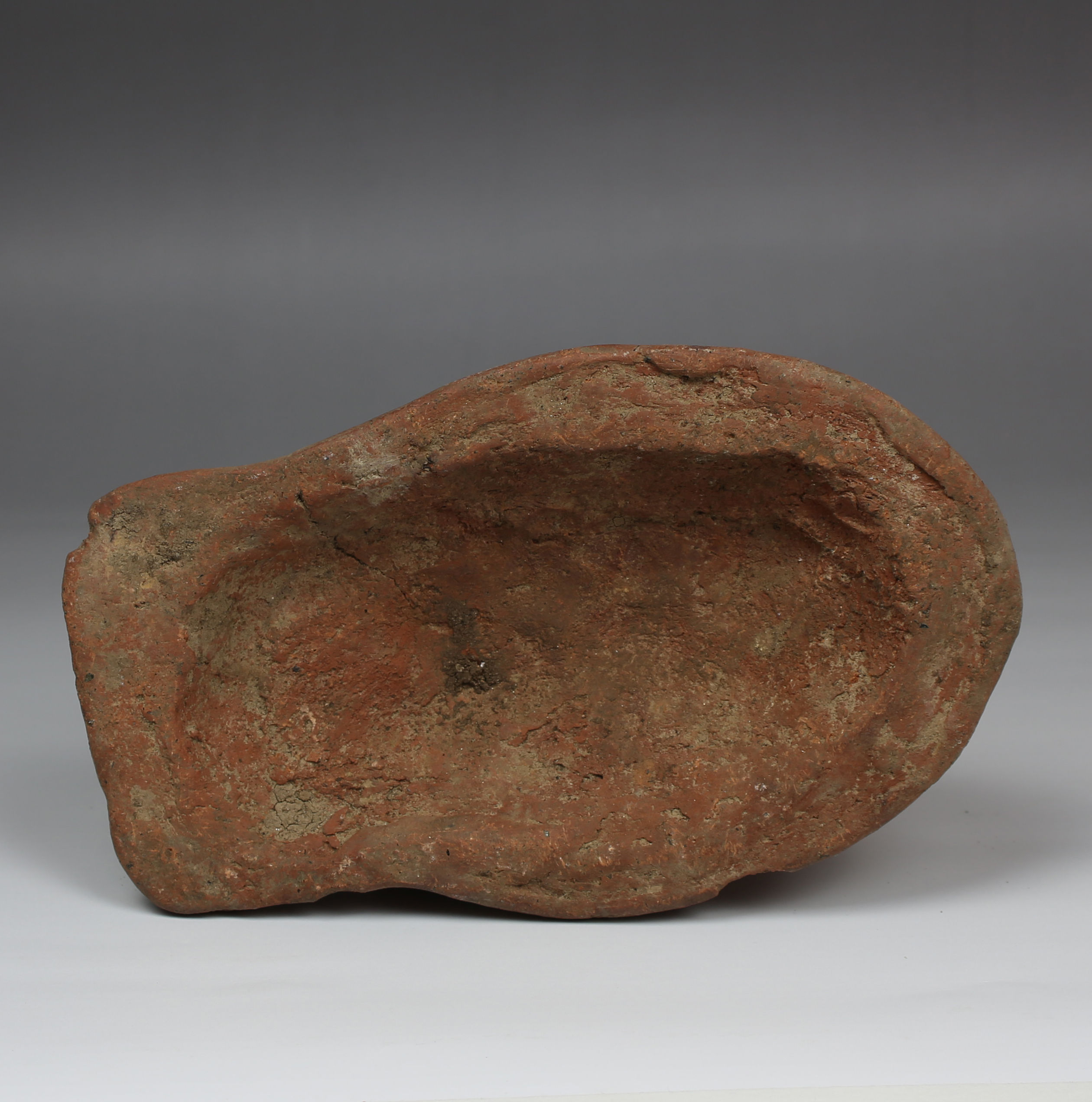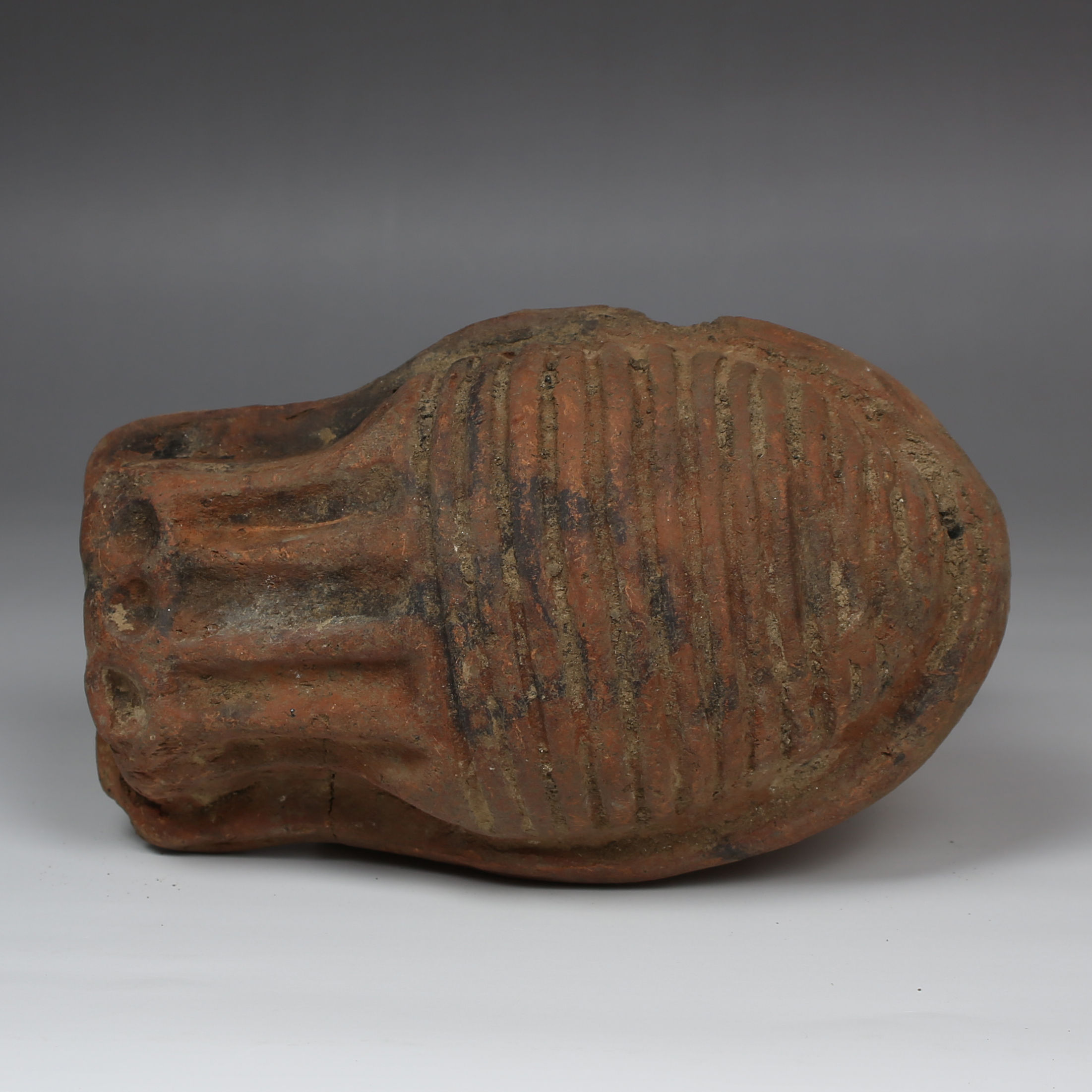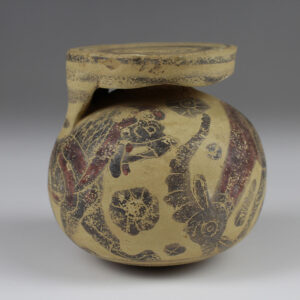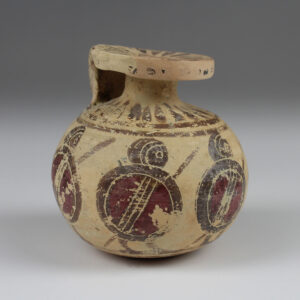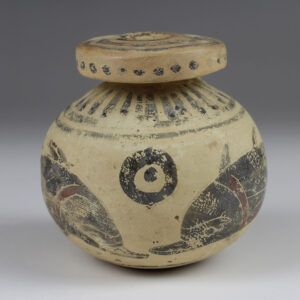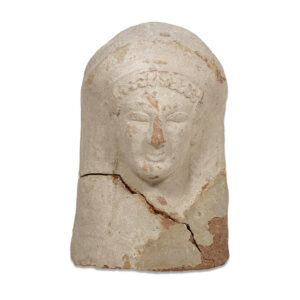Description
| ITEM | Anatomical votive model of an uterus |
| MATERIAL | Terracotta |
| CULTURE | Etruscan |
| PERIOD | 5th – 4th Century B.C |
| DIMENSIONS | 166 mm x 100 mm |
| CONDITION | Good condition |
| PROVENANCE | Ex Spanish private collection |
In ancient Etruria, votive offerings played a significant role in religious practices and rituals, with anatomical votive models being particularly notable for their distinctive forms and symbolic significance. Anatomical votive models were miniature representations of body parts or organs, often crafted from terracotta, clay, or other materials, and offered to deities as expressions of devotion, gratitude, or supplication. Among the most common anatomical votive models found in Etruria were those depicting the uterus, reflecting the importance of fertility and childbirth in Etruscan religious beliefs and social customs.
The uterus votive models found in Etruria typically exhibited a high degree of anatomical accuracy, with detailed features such as fallopian tubes, ovaries, and cervixes rendered in miniature form. These models were often accompanied by inscriptions or dedicatory texts, providing clues about their purpose and the intentions of the individuals who offered them. The uterus votive models were believed to have protective and therapeutic properties, offering divine assistance to women experiencing difficulties related to fertility, childbirth, or reproductive health.
The prevalence of uterus votive models in Etruscan sanctuaries, temples, and tombs underscores the central role of women and the concept of fertility in Etruscan society and religion. These votive offerings served as tangible expressions of faith and hope, symbolizing the desire for fertility, childbirth, and the continuation of family lineage.


